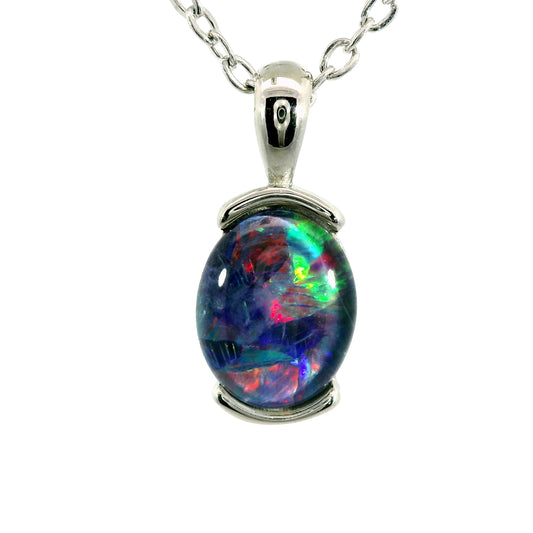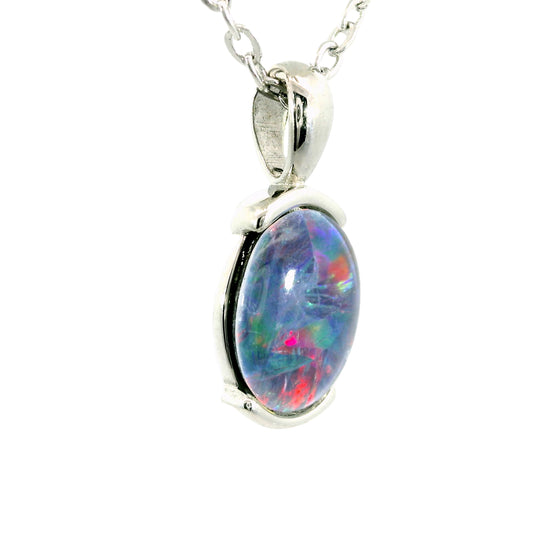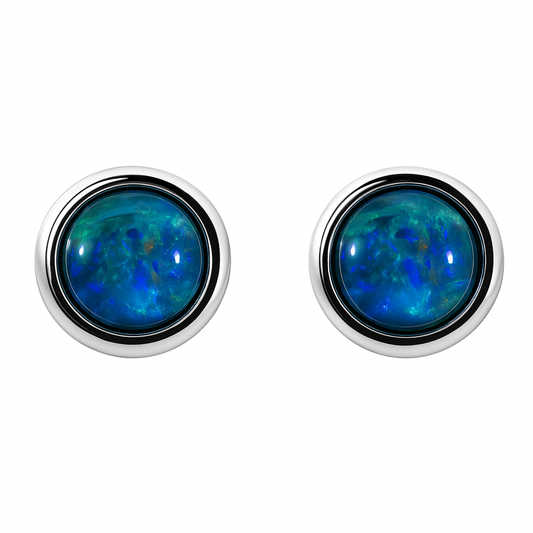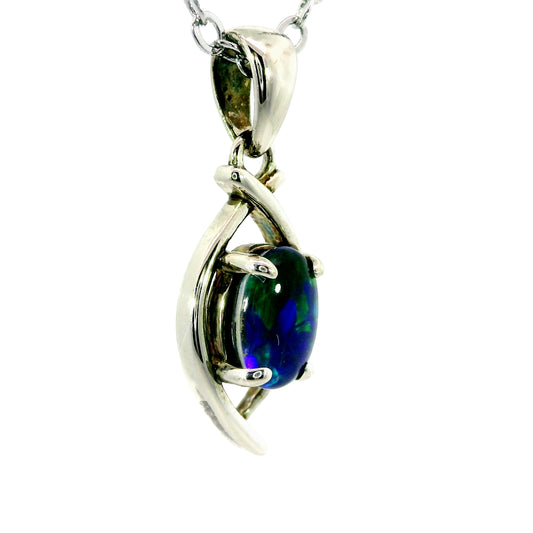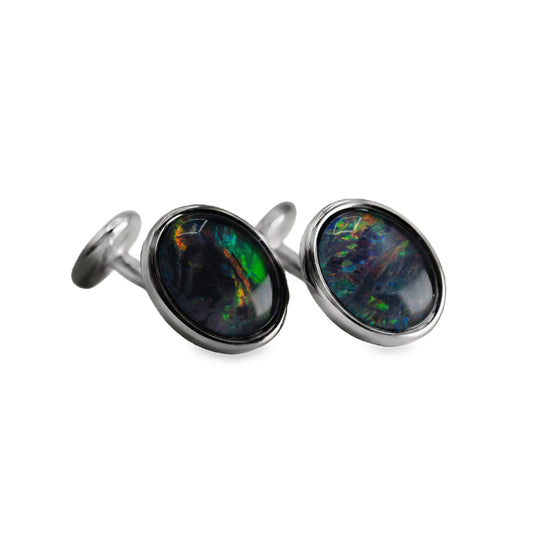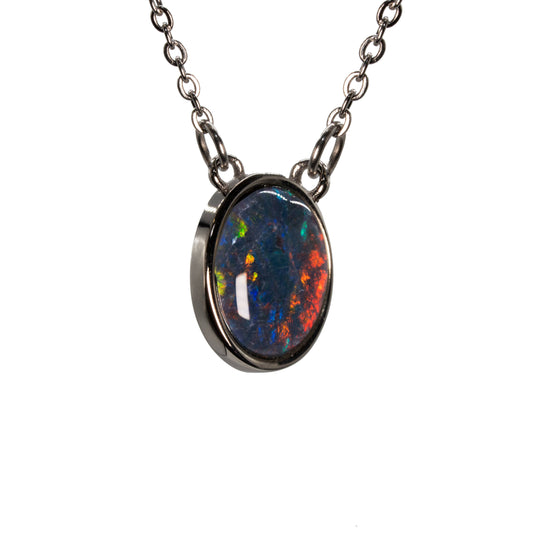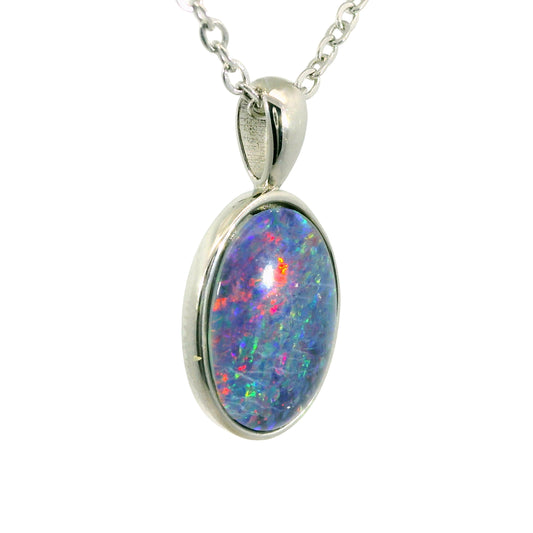Decades of Dedication - A Brief History of Australian Opal
Beginning with wholesale trading in 1967, Jack Musgrave Blaiklock travelled throughout Australia and New Zealand with his son, Graeme Blaiklock. It was within these years that Graeme found his heart for opal, learning from his father as he continued in his footsteps as a jewellery sales rep; these experiences are the foundation for many of the principles which Graeme founded Australian Opal Cutters upon, creating a unique outlook that is not often seen within the jewellery market of modern time.
Australian Opal Cutters, as the name suggests, specialises in sourcing opals directly from mines, crafting contemporary jewellery designs that showcase the natural beauty of Australian opal stones. By manufacturing its jewellery and bypassing intermediaries, the brand has been able to offer exceptional products at competitive prices.

The Beginnings of Australian Opal
Opal stones and mesmerising opal jewellery are synonymous with Australia, but how did it all begin? When was opal first discovered in Australia, and how old are Australian opals?
The first discovery of what we would consider modern-day opal was made near Angaston (South Australia), by German geologist Johannes Menge in 1849. As such an industry began to bloom, Queensland Boulder Opal and Lightning Ridge fields attracted large crowds within the 1880’s. As these raw opal mines became more accessible, it allowed for professional cutters to arrive on the scene; using what was left from old treadle sewing machines or bicycles, innovative gear was designed to allow for the effective cutting and polishing of these newfound treasures, transforming raw opal into quality pieces of opal jewellery.
Those who have studied written accounts of the history of Australian opal discovery around the time often suggest that most of the early Australian discoveries were accidental; a horse’s hoof revealing opal within a rock, pretty pebbles found nestled within unsuspecting creek beds, or flocks of sheep being struck by lightning during a storm - this last story being the reason as to why the famous ‘Lightning Ridge’ has its name. This ‘sheer luck’ also came into effect during the Depression years, as a number of Queensland locations were uncovered by men without work, who were willing to test fate.
The discovery of such a gem caused a stir within the world; the gem market of the 1890’s had talk from Hungarian mines that these opals were not genuine. This is due only to the fact that nowhere else could such bold colours and prominent ‘fire’ patterns be seen within an opal, leading others who had not seen the mines to speculate that this was all for show. By 1932, the Easter European mines were unable to compete with the quality of gemstone that was being unearthed in Australia, allowing the ‘lucky country’ to take hold of opal production, leading to its current fame.
Since these early days of Australian opal discovery, there has been a spectacular increase in production, leading to South Australia holding the mark for around 50% of the world's production.

Opal Myths and Legends
Australian opal history has been faced with countless myths and legends that surround the existence of opal stones, with many of them seemingly having positive connotations. One of the earliest descriptions of opal can be traced back to Pliny the Elder, who described it as a convergence of the most precious gems, a phenomenon impossible to fully articulate.
"Made up of the glories of the most precious gems, to describe them is a matter of inexpressible difficulty. For there is amongst them the gentler fire of the ruby, there is the rich purple of the amethyst, there is the sea-green of the emerald, and all shining together in an indescribable union. Others, by an excessive heightening of their hues equal all the colours of the painter, others the flame of burning brimstone, or of a fire quickened by oil."
Opal's historical significance is underscored by stories like that of the Roman senator Nonius, who valued his opal so highly that he chose to depart from Rome, leaving behind his family and possessions, rather than part with the precious stone.
Despite its early acclaim, opal faced its share of challenges, including efforts to discredit its worth. Around the late 18th and 19th centuries, opal seemed to fall ‘out of favour’ with the public, as it began to have associations with the fall of monarchies. This association was further solidified as Europe was plagued with the Black Death, as there were rumours that an opal worn by a patient would be bright with colour up until their death, where then the colour would fade, losing its brilliance as its owner died.
However, its redemption came with the endorsement of figures such as Queen Victoria, who not only adorned herself with opals but also influenced their resurgence in popularity. With the discovery of Australian opal fields in the late 19th century, the gemstone's reputation soared, solidifying Australia's position as a premier opal producer.
Opal lesson from Australian Opal Cutters on Vimeo.
The 'Miner Test'
Opals, like many other gemstones, are affected by the nearby light that may be present within a room. However, something that sets these stones apart is how significantly impacted opals can be by their lighting conditions.
When exposed to bright light, opals may exhibit vibrant colours and intense flashes, which would enhance their visual appeal. Many jewellers would be aware of this fact, allowing for brighter overhead lights, which would make the gemstone appear more brilliant in-shop, and therefore more attractive to potential buyers.
It is crucial for customers to be aware of this practice, and view how an opal's surroundings would significantly impact the gemstone they hold. Evaluating the gemstone under various lighting conditions is essential to make an informed purchase decision. Watch the video below to be informed of the 'Miner Test' - a technique that proves quite reliable when one seeks to purchase opal.
Black Opal
Black opal is incredibly rare and is found at Lightning Ridge in Northern NSW. The name 'black opal' originates from the stone that it is found in, due to the colours that occur as the opal is naturally found, having a black base caused by iron oxide found within the opal and surrounding stone. This black patch - or common opal - has no value unless we find a colour bar on top of it. This colour is what gives the black opal its value, as the natural darkened nature of the stone allows for the colours to appear more vibrant. This creates a lovely stone for all opal jewellery, as even tinier pieces - such as opal earrings, or small dainty opal rings - will not lose the lovely shifting colours that opal is famous for.
Boulder Opal
Boulder opal is formed in the cracks and crevices of the ironstone boulders in a gel form possibly as recently as hundreds of years ago, and with the passing of centuries this jelly opal turned solid and as you can see we are left with some beautiful boulder opal specimens. Boulder opal occurs as a filling between the concentric layers or in random crevices in the ironstone. The cutting process is extremely difficult as the cutter must navigate the “hills and valleys” of the Boulder Opal surface. What we are left with is an incredibly unique and individual gemstone.
The boulder opal has a high loss factor when cutting as we only yield 5% and has a rock waste factor of 95%. It is also the only opal suggested to run out within the next 5 to 10 years and with the value (“it is suggested”) increasing by 15-25% each year the Boulder opal can certainly make a sound long-term investment.
Even as only a stone, boulder opal carries with it a legacy. Prince William and Kate have had a number of opal pieces curated for them - such as cufflinks, and the occasional pearl earring - allowing for a modern age to infuse this stone with a royal integrity.
White Opal
Coober Pedy was discovered in 1915, and in the years since then has gained a reputation as the place where most of the 'white' or 'milky' crystal opals are mined. Crystal opal is pure hydrated silica it is translucent so you can see straight through it. We prefer the colour to be multi-directional, so you can see colour from all different angles, the second thing we prefer is large blocks of colour and the third thing is strong play of colour that shows up in the dark.
This allows for a softer jewellery aesthetic, giving a whole new look to the classic opal necklaces or opal rings that are so popular in today's market.
Doublet and Triplet Opal
If you are looking for an opal gem that has all of the characteristics of a top black opal, but at a price you can afford, then doublets and triplets are for you. A doublet is a thin layer of crystal opal with a layer of potch - black common opal, an amorphous mineraloid comprised of hydrated silicon dioxide, or ironstone - on the back which acts to bring out the colour of the opal.
Now this black potch has value only as a backing for an opal doublet because to make quality opal doublets, that won’t delaminate, we need to use material with the same “coefficient of expansion”. If we put plastic on the back of the opal (and sadly some unscrupulous people do) to make an opal doublet, the 2 different materials will delaminate and fall apart.
When delaminating occurs, moisture can also come between the layers and affect the colour of the opal. We offer a lifetime guarantee against delaminating and we have never had a customer return a doublet or a triplet because of this process of bonding opal-to-opal.
Triplets are a doublets with a crystal quartz cap on the top which acts to magnify and enhance the colour of the opal and provide a strong resilient “cap”.
Discover the unique world of opals at Australian Opal Cutters, where each piece is made to capture the time allure and bring forth the natural brilliance of this lucky gem. From the rare and prized black opals to the intricately crafted boulder opals, and the delicately beautiful white and crystal opals, our collection showcases the finest selection of opal jewellery, each piece handcrafted with meticulous attention to detail and quality.
Experience the beauty of opals firsthand and revel in the rich history and cultural significance that these gems hold.
Lightning Ridge Black Opal Documentary from Australian Opal Cutters on Vimeo.












































































































